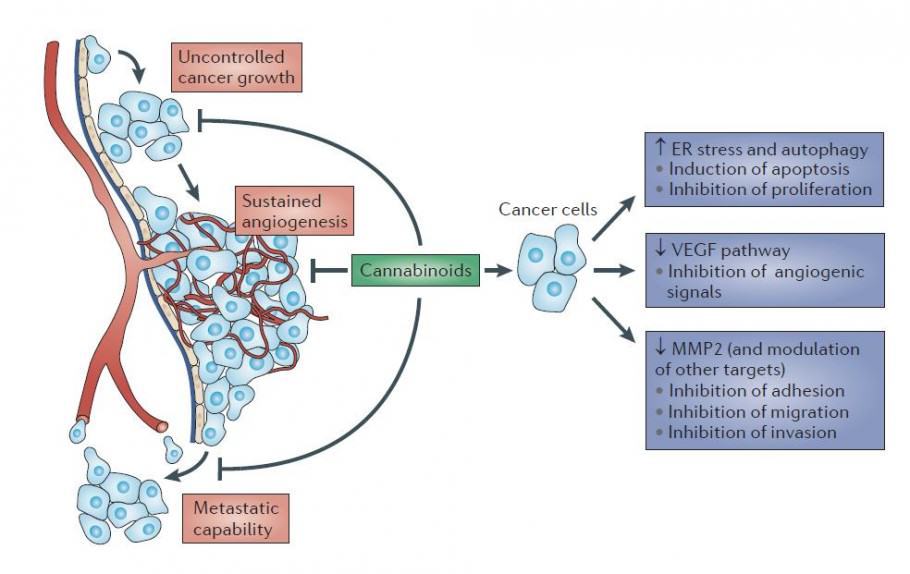
The Lancet Psychiatry: American study finds legalising medical marijuana* does not increase use among adolescents. That was the headline regarding a United States nationwide study analysing 24 years of data (1991 to 2014) from over one million American adolescents in the 48 contiguous states which found no evidence that legalising the use of Cannabis for medical purposes leads to increased use among teenagers.
The study, published in The Lancet Psychiatry journal (see the Summary below) showed no significant difference in adolescent Cannabis use in 21 American states with medical Cannabis laws before or after implementation of these laws. Since 1996, 23 US states and the District of Columbia have passed laws allowing the medical use of Cannabis. State legalisation of medical Cannabis has raised concerns about increased accessibility and acceptability of Cannabis to teenagers.
 According to Dr Hasin, "Our findings provide the strongest evidence to date that marijuana use by teenagers does not increase after a state legalises medical marijuana". Dr Kevin Hill from the Division of Alcohol and Drug Abuse, McLean Hospital, Belmont, Massachusetts, US says, "The growing body of research that includes this study suggests that medical marijuana laws do not increase adolescent use, and future decisions that states make about whether or not to enact medical marijuana laws should be at least partly guided by this evidence. The framework of using a scientific method to challenge what might be ideological beliefs must remain an important driver of future research on marijuana policy." This study was funded by the US National Institute on Drug Abuse, Columbia University Mailman School of Public Health, and the New York State Psychiatric Institute.
According to Dr Hasin, "Our findings provide the strongest evidence to date that marijuana use by teenagers does not increase after a state legalises medical marijuana". Dr Kevin Hill from the Division of Alcohol and Drug Abuse, McLean Hospital, Belmont, Massachusetts, US says, "The growing body of research that includes this study suggests that medical marijuana laws do not increase adolescent use, and future decisions that states make about whether or not to enact medical marijuana laws should be at least partly guided by this evidence. The framework of using a scientific method to challenge what might be ideological beliefs must remain an important driver of future research on marijuana policy." This study was funded by the US National Institute on Drug Abuse, Columbia University Mailman School of Public Health, and the New York State Psychiatric Institute.
In the study, Dr Deborah Hasin, Professor of Epidemiology at Columbia University Medical Center, New York, and colleagues, examined the relationship between the legalisation of medical Cannabis and adolescent Cannabis use by analysing national 'Monitoring the Future' survey data[1] from over one million students in the 8th, 10th and 12th grades (aged 13-18) between 1991 and 2014 - a period when 21 contiguous states passed laws allowing Cannabis use for medical purposes. The findings showed that although Cannabis use in the previous 30 days was more prevalent in states that enacted medical Cannabis laws than those that did not, rates of adolescent Cannabis use did not increase after these laws were introduced. These findings persisted even after taking into account individual, school and state-level factors that can affect Cannabis use such as age, ethnicity, public versus private school, proportion of each state's population who were male or white.
 According to Dr Hasin, "Our findings provide the strongest evidence to date that marijuana use by teenagers does not increase after a state legalises medical marijuana". Dr Kevin Hill from the Division of Alcohol and Drug Abuse, McLean Hospital, Belmont, Massachusetts, US says, "The growing body of research that includes this study suggests that medical marijuana laws do not increase adolescent use, and future decisions that states make about whether or not to enact medical marijuana laws should be at least partly guided by this evidence. The framework of using a scientific method to challenge what might be ideological beliefs must remain an important driver of future research on marijuana policy." This study was funded by the US National Institute on Drug Abuse, Columbia University Mailman School of Public Health, and the New York State Psychiatric Institute.
According to Dr Hasin, "Our findings provide the strongest evidence to date that marijuana use by teenagers does not increase after a state legalises medical marijuana". Dr Kevin Hill from the Division of Alcohol and Drug Abuse, McLean Hospital, Belmont, Massachusetts, US says, "The growing body of research that includes this study suggests that medical marijuana laws do not increase adolescent use, and future decisions that states make about whether or not to enact medical marijuana laws should be at least partly guided by this evidence. The framework of using a scientific method to challenge what might be ideological beliefs must remain an important driver of future research on marijuana policy." This study was funded by the US National Institute on Drug Abuse, Columbia University Mailman School of Public Health, and the New York State Psychiatric Institute.
Medical marijuana* laws and adolescent marijuana
use in the USA from 1991 to 2014: results from
annual, repeated cross-sectional surveys
Summary
Background
Adolescent
use of marijuana is associated with adverse later effects[2], so the
identification of factors underlying adolescent use is of substantial
public health importance. The relationship between US state laws that
permit marijuana for medical purposes and adolescent marijuana use
has been controversial. Such laws could convey a message about
marijuana acceptability that increases its use soon after passage,
even if implementation is delayed or the law narrowly restricts its
use. We used 24 years of national data from the USA to examine the
relationship between state medical marijuana laws and adolescent use
of marijuana.
Methods
Using
a multi-stage, random-sampling design with replacement, the
'Monitoring the Future' study conducts annual national surveys of
8th, 10th and 12th-grade students (modal ages 13–14, 15–16 and
17–18 years, respectively), in around 400 schools per year.
Students complete self-administered questionnaires that include
questions on marijuana use. We analysed data from 1,098,270
adolescents surveyed between 1991 and 2014. The primary outcome of
this analysis was any marijuana use in the previous 30 days. We used
multi-level regression modelling with adolescents nested within
states to examine two questions. The first was whether marijuana use
was higher overall in states that ever passed a medical marijuana law
up to 2014. The second was whether the risk of marijuana use changed
after passage of medical marijuana laws. Control co-variates included
individual, school, and state-level characteristics.
Findings
Marijuana
use was more prevalent in states that passed a medical marijuana law
any time up to 2014 than in other states (adjusted prevalence 15·87%
vs 13·27%; adjusted odds ratio [OR] 1·27, 95% CI 1·07–1·51;
p=0·0057). However, the risk of marijuana use in states before
passing medical marijuana laws did not differ significantly from the
risk after medical marijuana laws were passed (adjusted prevalence
16·25% vs 15·45%; adjusted OR 0·92, 95% CI 0·82–1·04;
p=0·185). Results were generally robust across sensitivity analyses,
including re-defining marijuana use as any use in the previous year or
frequency of use, and re-analysing medical marijuana laws for delayed
effects or for variation in provisions for dispensaries.
Interpretation
Our
findings, consistent with previous evidence, suggest that passage of
state medical marijuana laws does not increase adolescent use of
marijuana. However, overall, adolescent use is higher in states that
ever passed such a law than in other states. State-level risk factors
other than medical marijuana laws could contribute to both marijuana
use and the passage of medical marijuana laws, and such factors
warrant investigation.
Adapted
from materials
provided by The
Lancet, Science
Daily
*Cannabis
sativa L., is the correct botanical term, marijuana is slang,
derogatory and used erroneously across North America
[1]
Monitoring the Future is an ongoing study of the behaviours,
attitudes and values of American secondary school students, college
students, and young adults. Each year, a total of approximately
50,000 8th, 10th and 12th grade students are surveyed (12th graders
since 1975 and 8th and 10th graders since 1991)
http://www.monitoringthefuture.org/
[2] The International Centre for Science in Drug Policy (ICSDP) has come
out and debunked many such sweeping, baseless claims
about Cannabis
Summary
Background
Adolescent
use of marijuana is associated with adverse later effects[2], so the
identification of factors underlying adolescent use is of substantial
public health importance. The relationship between US state laws that
permit marijuana for medical purposes and adolescent marijuana use
has been controversial. Such laws could convey a message about
marijuana acceptability that increases its use soon after passage,
even if implementation is delayed or the law narrowly restricts its
use. We used 24 years of national data from the USA to examine the
relationship between state medical marijuana laws and adolescent use
of marijuana.
Methods
Using
a multi-stage, random-sampling design with replacement, the
'Monitoring the Future' study conducts annual national surveys of
8th, 10th and 12th-grade students (modal ages 13–14, 15–16 and
17–18 years, respectively), in around 400 schools per year.
Students complete self-administered questionnaires that include
questions on marijuana use. We analysed data from 1,098,270
adolescents surveyed between 1991 and 2014. The primary outcome of
this analysis was any marijuana use in the previous 30 days. We used
multi-level regression modelling with adolescents nested within
states to examine two questions. The first was whether marijuana use
was higher overall in states that ever passed a medical marijuana law
up to 2014. The second was whether the risk of marijuana use changed
after passage of medical marijuana laws. Control co-variates included
individual, school, and state-level characteristics.
Findings
Marijuana
use was more prevalent in states that passed a medical marijuana law
any time up to 2014 than in other states (adjusted prevalence 15·87%
vs 13·27%; adjusted odds ratio [OR] 1·27, 95% CI 1·07–1·51;
p=0·0057). However, the risk of marijuana use in states before
passing medical marijuana laws did not differ significantly from the
risk after medical marijuana laws were passed (adjusted prevalence
16·25% vs 15·45%; adjusted OR 0·92, 95% CI 0·82–1·04;
p=0·185). Results were generally robust across sensitivity analyses,
including re-defining marijuana use as any use in the previous year or
frequency of use, and re-analysing medical marijuana laws for delayed
effects or for variation in provisions for dispensaries.
Interpretation
Our
findings, consistent with previous evidence, suggest that passage of
state medical marijuana laws does not increase adolescent use of
marijuana. However, overall, adolescent use is higher in states that
ever passed such a law than in other states. State-level risk factors
other than medical marijuana laws could contribute to both marijuana
use and the passage of medical marijuana laws, and such factors
warrant investigation.


















